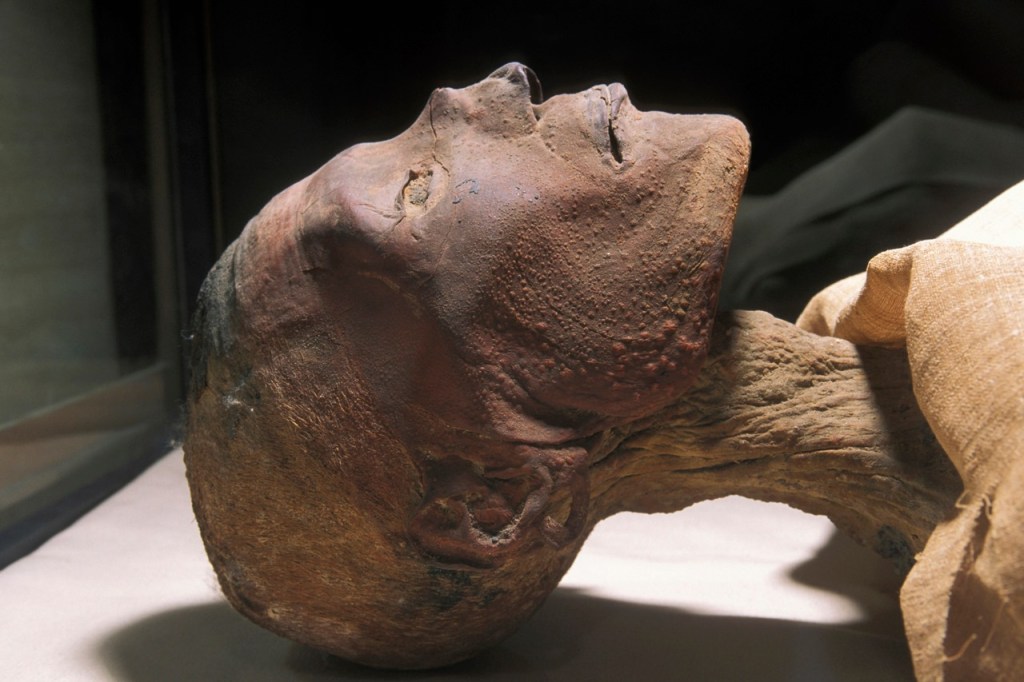Apparently, King Ramesses V died in his early thirties and this is perhaps the reason for the appropriation of his tomb by his successor, Ramesses VI. Nevertheless, the mummy later found its way to the Royal Cachette (DB320) at Deir el-Bahari.
The king’s face was painted in red and his nostrils were filled with wax. The mummy shows evidence of smallpox; the neck, chest and face were covered with raised nodules. The whole mummy was filled with sawdust, including part of his internal organs.
 Mummy of King Ramesses V. Photo: Patrick Landmann
Mummy of King Ramesses V. Photo: Patrick Landmann
The circumstances of Ramesses V’s death are unknown but it is known he had a reign of almost four full years. An ostracon records that this king was only buried in Year 2 of Ramesses VI, which was highly irregular since Egyptian tradition required a king to be mummified and buried precisely 70 days into the reign of his successor.
However, another reason for the much delayed burial of Ramesses V in Year 2, second month of Akhet day 1 of Ramesses VI’s reign (see KRI, VI, 343) may have been connected with Ramesses VI’s need “to clear out any Libyans [invaders] from Thebes and to provide a temporary tomb for Ramesses V until plans for a double burial within tomb KV9 could be put into effect.
Ramesses V, also known as Usermaatre Sekheperenre Ramesses V, was an ancient Egyptian king who ruled during the 20th Dynasty of the New Kingdom period. While his reign was relatively short, there are a few notable achievements associated with him.

One of Ramesses V’s significant achievements was his efforts in restoring stability and order to Egypt after a period of political unrest. He succeeded his father, Ramesses IV, during a time when the country faced internal challenges, including economic difficulties and power struggles within the royal court. Ramesses V implemented measures to address these issues and restore the authority of the king.
Another achievement attributed to Ramesses V is his involvement in religious and temple activities. He is known for making contributions to the construction and restoration of various temples, including the Karnak Temple complex in Thebes. He also conducted religious rituals and ceremonies, emphasizing the importance of maintaining the traditional religious practices of ancient Egypt.
Additionally, Ramesses V is believed to have made advancements in the field of medicine. His mummy shows evidence of surgical procedures, suggesting that he may have supported medical practices and possibly even contributed to medical knowledge during his reign.

While the specific details of Ramesses V’s achievements may not be extensively documented, his efforts in stabilizing Egypt, his involvement in temple construction and religious activities, and his potential contributions to medicine are notable aspects of his reign.
New Kingdom, 20th Dynasty, reign of Ramesses V, ca. 1149-1145 BC. Now in the National Museum of Egyptian Civilization (NMEC), Cairo. JE 34566